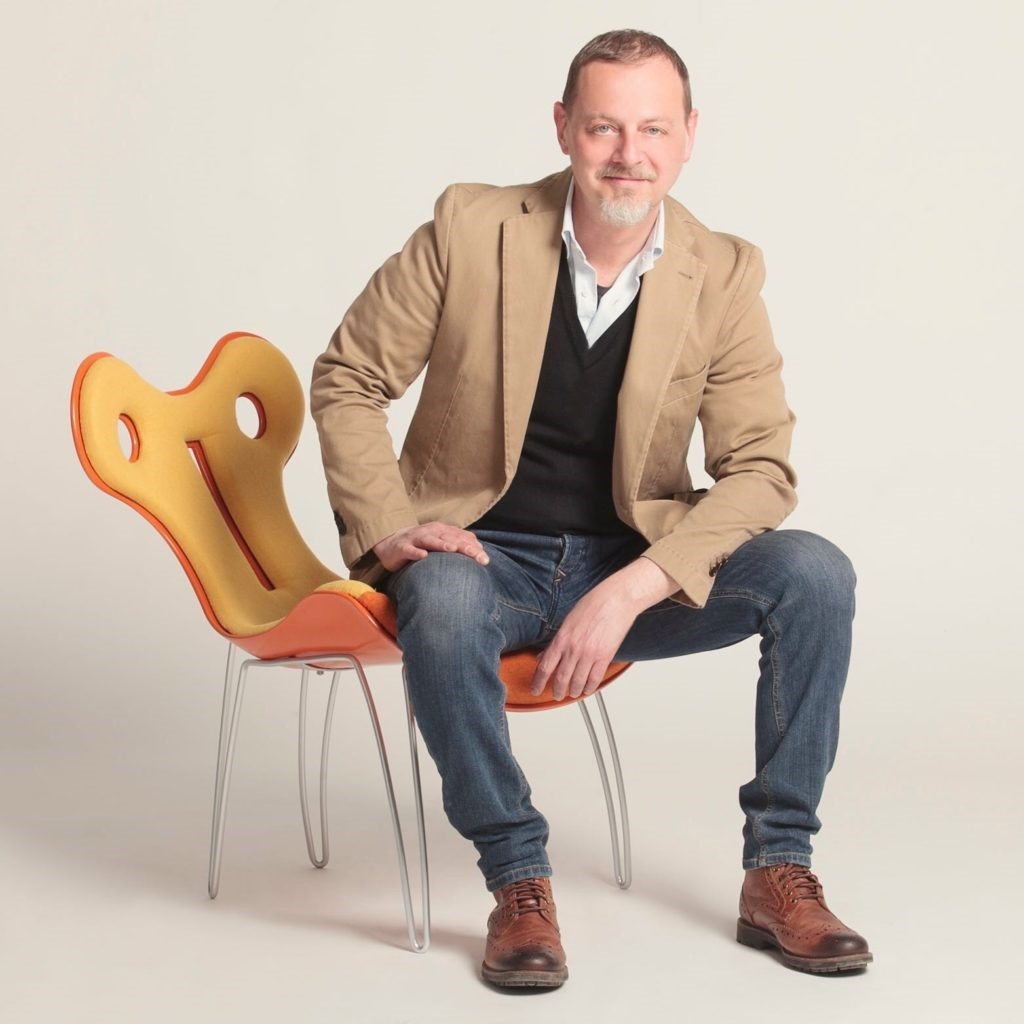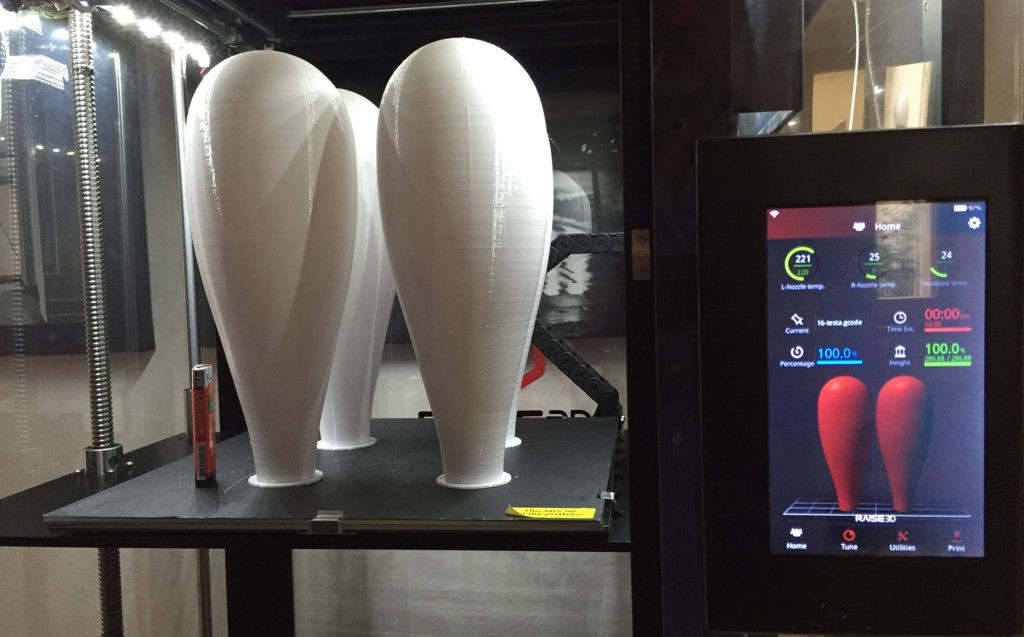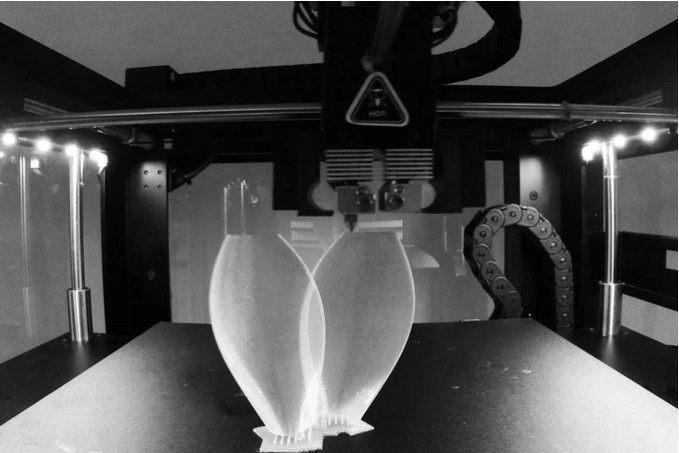With the advent of 3D printers, many advanced designers tried to use 3D technology to create furniture and interior elements, but the first attempts were more experimental.
It has become a real business idea only recently with the advent of professional printers at an affordable price that designers and small companies can afford.
A pioneer in the application of 3D equipment for the manufacture of design objects is Janne Kitanen, a digital sculptor who creates complex geometric products with an incredible design (from exclusive platform shoes to chairs, and even ping-pong tables).
Despite the cost of space (by the standards of a simple man in the street), Janne's products are bought up like hot cakes.
The cost of this sofa is $ 100,000The main advantages of using 3D printing in this area:
- new opportunities in design solutions;
- implementation of complex exclusive projects;
- The cost is lower compared to traditional production methods.
Let us tell you about 3 designers who use Raise3D 3D printers to create interior items and furniture.
Wanhao Chai - designer and owner of Yujia Metal ScienceThe company Yujia Metal Science creates exclusive metal furniture, and Raise3D N2 is used to optimize production processes.
Wanhao Chai says: “A 3D printer allows you to increase efficiency and save labor costs. Products become clear visually at the prototyping stage, you can see all the details and quickly make corrections. ”
Sofa printed on Raise3D N2The company Yujia Metal Science creates household items made of metal: partitions, doors, windows, furniture, wine cabinets, metal decorations and other interior elements.
Positioning itself as a boutique of designer furniture and an exclusive production, Yujia works in a narrowly segmented direction - manufacturing custom-made interior items.
Yujia Metal Science turned to 3D printing for a solution to the main problem - to increase
production speed and frequency of release of new products.
Before using 3D printers, Yujia ordered very expensive wooden prototypes.
for checking and reconciling models. Before making the steel version, this process was repeated many times. Many plants do not welcome such a format of cooperation with small-scale production, considering it not rational to spend time on the production of individual prototypes.
Therefore, Yujia often found itself in a difficult situation and was rejected by companies due to
small volumes of their orders.
Using Raise3D 3D printers, the company succeeded:
- Reduce production time through the use of 3D printers, as well as by dividing the printing of prototypes between several printers.
- Reduce costs by reducing the required labor and the use of cheaper materials for prototypes.
- Transfer the production of prototypes and products completely to their production. Due to this, they got rid of the extra costs and uncertainties that were inevitable when working with outsourcing companies.
- Create the largest and most complex versions of projects, thanks to a large printing area and high precision Raise3D.
Manufacturing processFor the manufacture of prototypes need only product drawings, slicer, plastic for printing and printers Raise3D N2. At the beginning, the required file is converted to STL, then a print preview is used to minimize the number of supports and optimize all layers, the layout of the elements, the appearance of the model.
The purpose of printing the first model is to see the appearance of the structure. Using the printed prototype, the designer can physically interact with it, see all the nuances and shortcomings, decide on changes and quickly correct the model.
Metal parts and legs will be used in the final design of the chair.As a result, the use of 3D printers achieved:- 91.67% reduction in total production time
- 75% reduction in working time
- 99.17% reduction in prototype costs
Marco Rubini, Italian architect and designer.Prints furniture prototypes on the Raise3D N2 Dual Plus.

Marco founded his own design studio in 1992. The main directions of his activity: design development and consulting in the field of architecture. For Marco, it has always been important to offer his clients customized solutions, in which the N2 Plus is currently helping him.
It uses Raise3D to print prototypes and original pieces of furniture on a 1: 1 scale.
Most of all, in a 3D printer, Marco values his endurance and durability, taking Raise3D as a workhorse.

 Cory Zverlin (Still Alive Lights LLC) - printing lights on a 3D printer.
Cory Zverlin (Still Alive Lights LLC) - printing lights on a 3D printer.Corey designs designer ceiling lamps for LED luminaires (including solar panels).

On the Raise3D N2 Plus, he prints the ceiling in the form of animals, flowers and more. To achieve maximum transparency and best light transmission, Corey adjusts the smallest thickness of the model in the print settings. For his creations uses the usual PLA plastic.

Currently, 3D printing allows you to create complex objects of unusual shape, the production of which in other ways most costly and difficult to implement. Additive technologies can increase productivity and reduce the cost of materials and labor, which is why many companies are already using 3D printing and 3D scanning to produce furniture and interior elements.
Do you have interesting stories about using 3D printers for business or personal use? We will be glad if you share with us!Join us in the social. networks to keep abreast of the latest developments:
FacebookVKontakteYouTubeThe team of the company
Color World